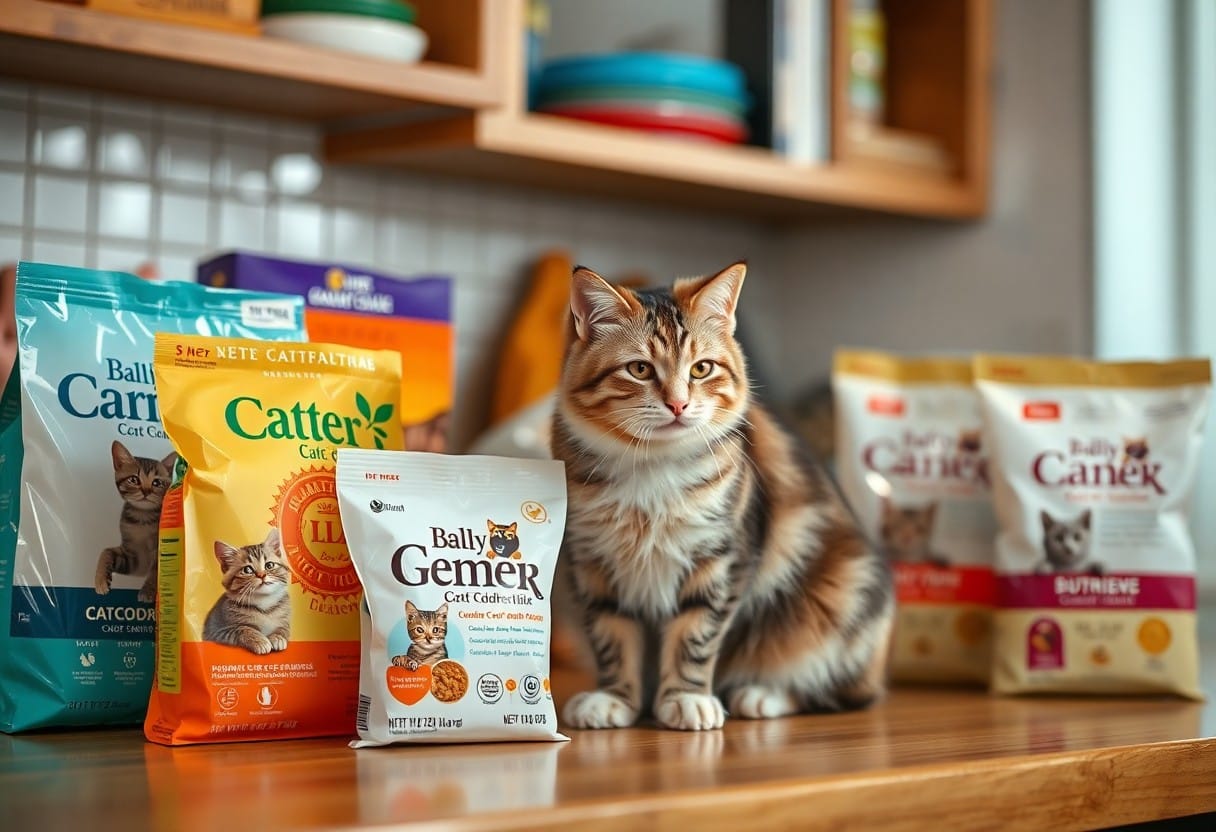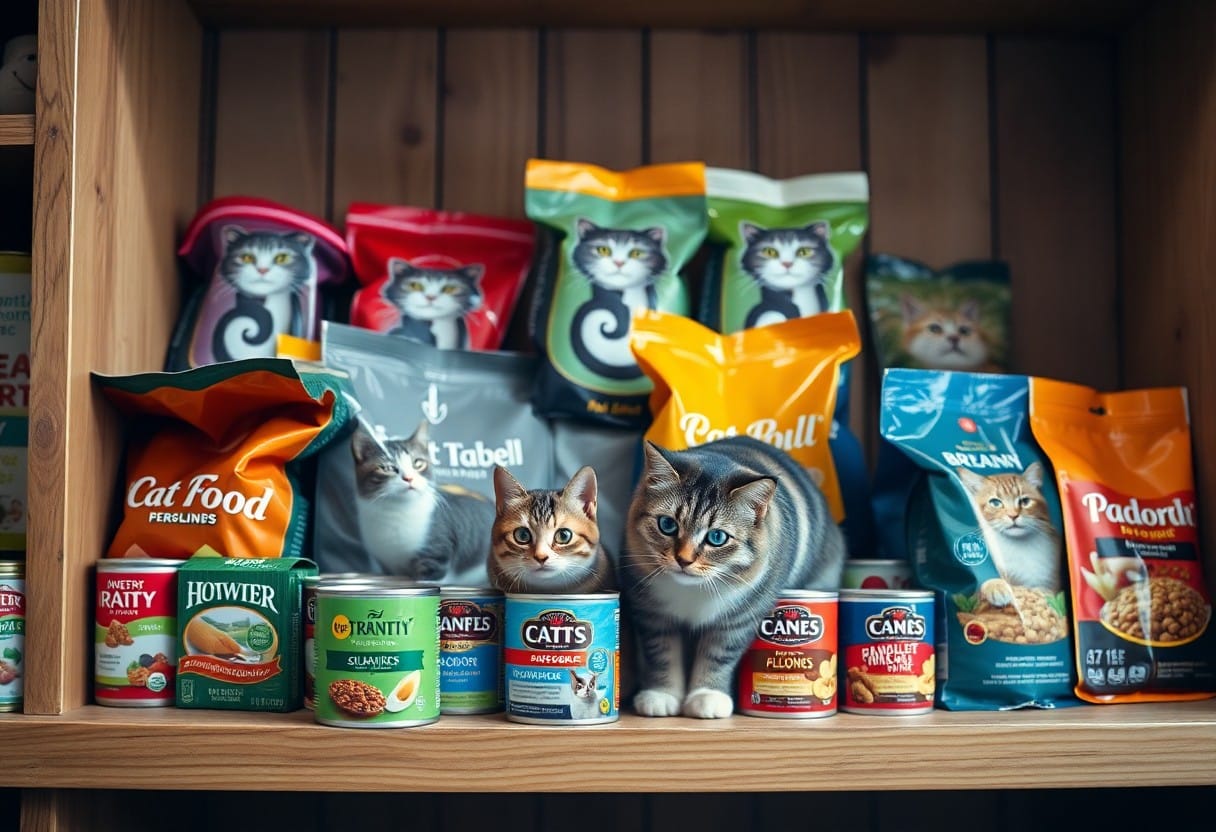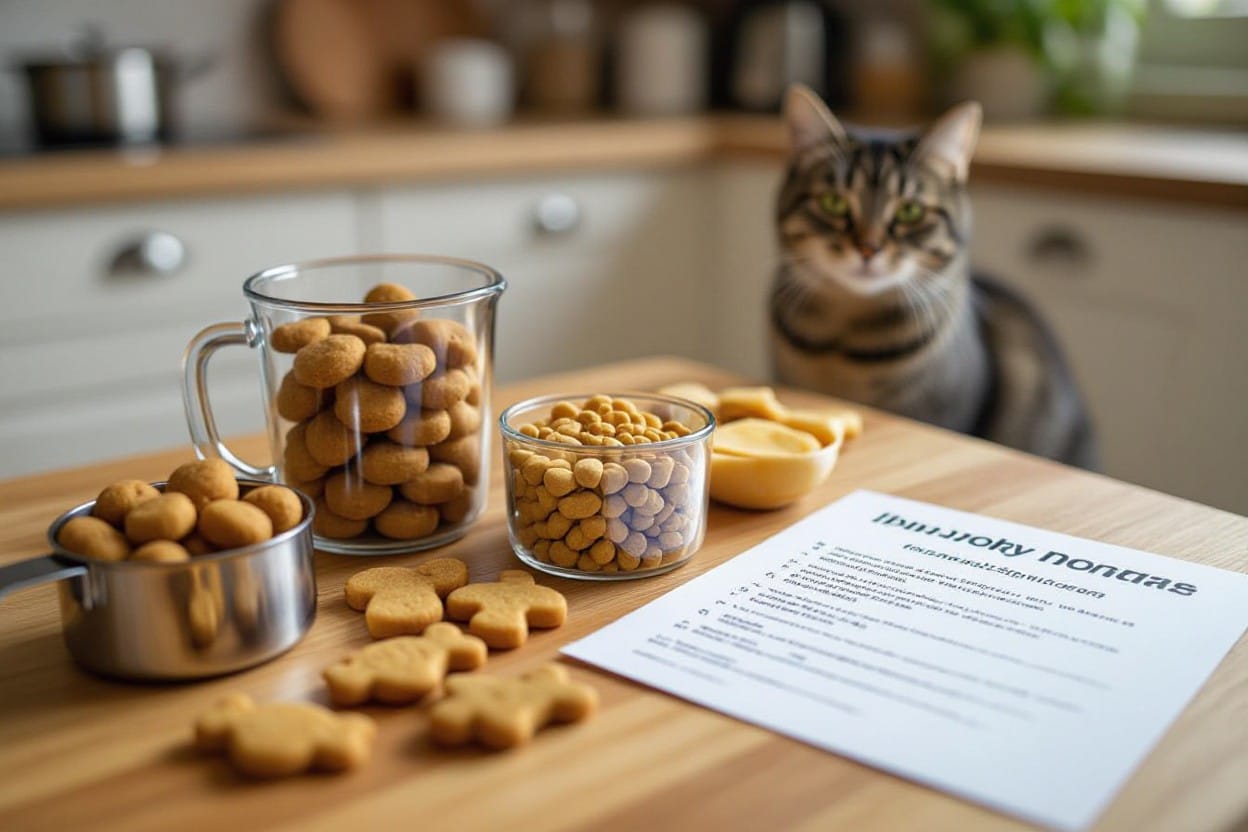Guide your furry friend to a healthier life by carefully selecting the right cat food brand. You may not realize that making an informed choice about your cat’s diet is important for their well-being, as poor nutrition can lead to serious health issues. With seven critical steps to follow, you will equip yourself with the knowledge needed to evaluate ingredients, consider your cat’s specific needs, and make a decision that benefits their long-term health. Dive into this guide to ensure your beloved pet gets the nutrition they deserve!
Key Takeaways:
- Assess the ingredient quality and source to ensure your cat receives balanced nutrition and avoids harmful additives.
- Evaluate the brand’s reputation by researching their history, recall records, and customer reviews to gauge reliability.
- Consider your cat’s specific dietary needs and lifestyle (such as age, weight, and health conditions) to select the most suitable food type.
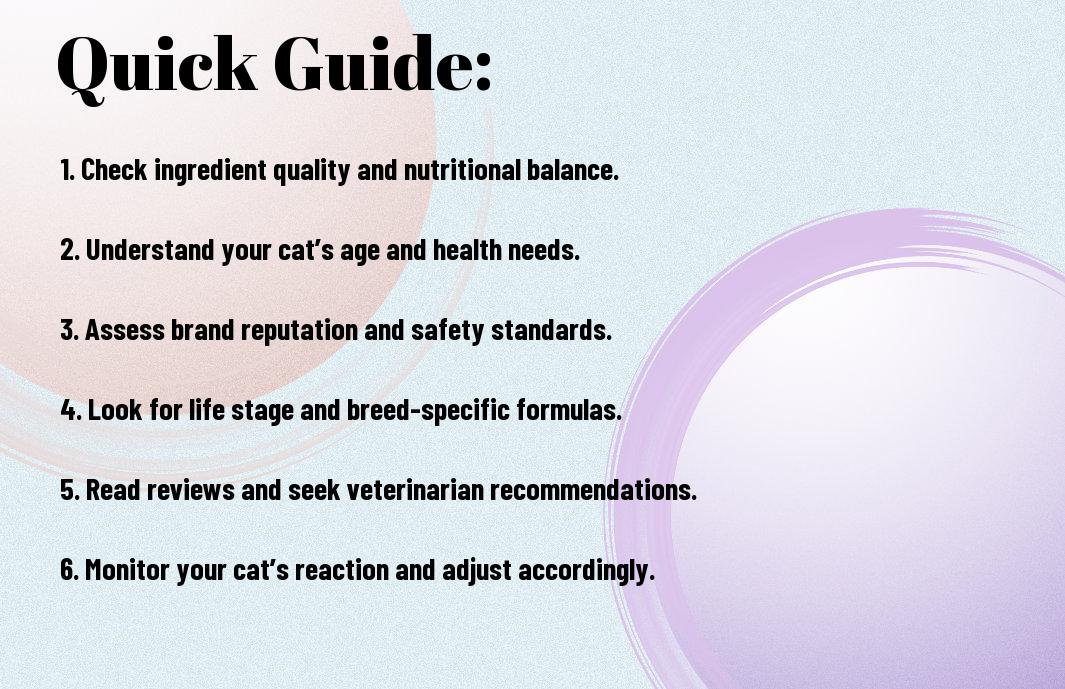
Understanding Cat Food Types
As a cat owner, selecting the right food type is imperative for your pet’s health and well-being. Different cat food types have unique benefits, so it’s crucial to weigh your options. Here’s a breakdown of common types of cat food:
| Dry Cat Food | Crunchy and convenient; good for dental health. |
| Wet Cat Food | Higher moisture content; great for hydration. |
| Raw Cat Food | Natural diet; mimics a feline’s natural intake. |
| homemade Cat Food | Customizable ingredients; can be nutritious but requires careful planning. |
| Specialty Diets | Formulated for specific health conditions. |
Dry Cat Food
While dry cat food is convenient and often more affordable, it may not provide enough moisture for your cat. It can contribute to dental health by reducing tartar buildup. However, be cautious about choosing a brand with high-quality ingredients, as not all dry cat foods are nutritionally balanced. Your cat’s age, health, and activity level should guide your selection.
Wet Cat Food
Food that comes in a wet format is popular for a reason: cats usually find it more palatable and it provides hydration due to its high moisture content. However, choosing the right wet cat food is vital, as some brands can contain high levels of preservatives and fillers that might not be beneficial for your cat’s overall health.
With wet cat food, you can enjoy the advantage of encouraging your cat to drink more water, which is imperative for their renal health. Look for brands that list high-quality protein sources as the primary ingredient, avoiding those with a high number of by-products or artificial additives. While generally more expensive than dry food, many cat owners find that the benefits of increased hydration and palatability make it a superior choice for their feline companions.
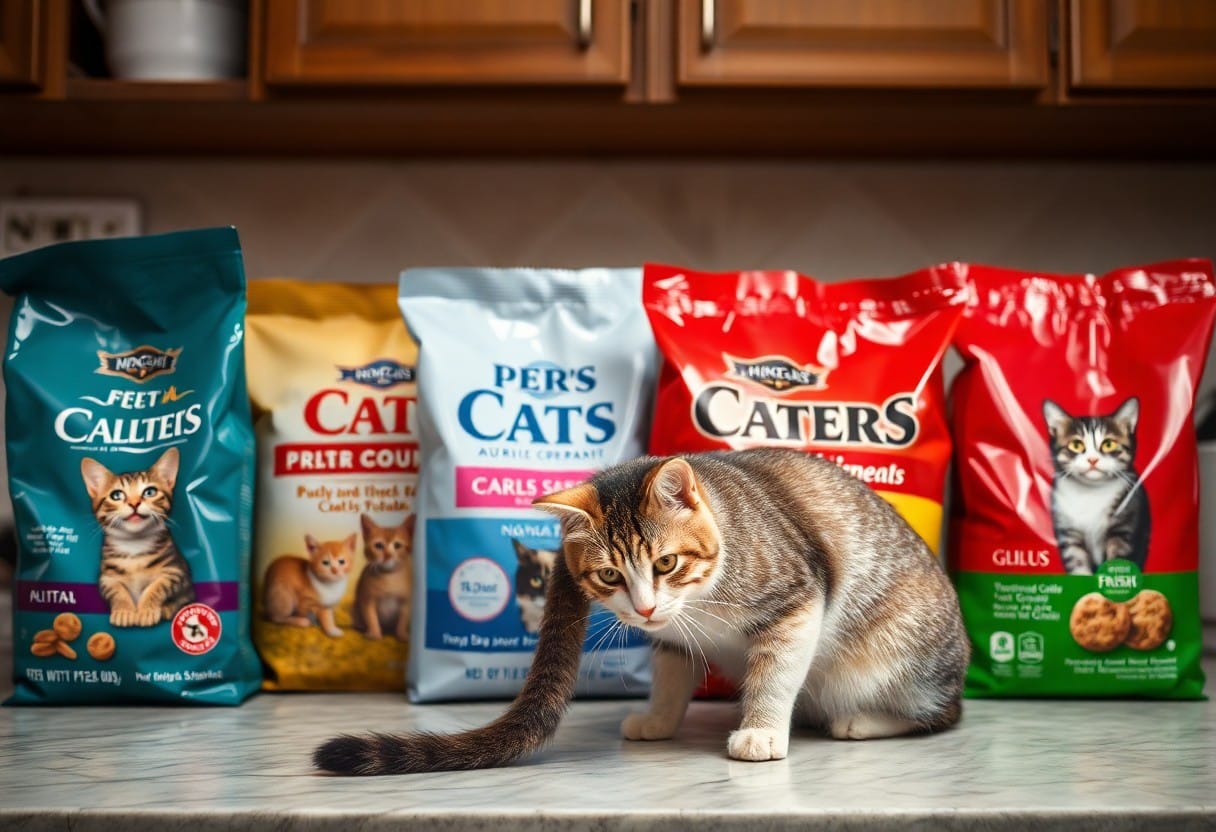
Key Factors to Consider
Now that you’re ready to select the perfect cat food brand, there are several key factors to take into account. Pay attention to the following:
- Nutritional Content
- Ingredients Quality
- Avoiding Fillers
- Brand Reputation
- Price vs. Value
Assume that understanding these factors will lead you to make a well-informed choice, ensuring your cat’s health and happiness.
Nutritional Needs
Factors such as the right balance of proteins, fats, and carbohydrates are vital in meeting your cat’s nutritional needs. Look for formulas specifically designed to provide the necessary nutrients your cat requires for optimal health.
Age and Health Conditions
Nutritional needs may change based on your cat’s age and health conditions. As your cat ages, its digestive system may require easier-to-digest ingredients. For instance, senior cats may benefit from lower calories and specific nutrients like glucosamine for joint health. If your cat has health issues, such as diabetes or kidney disease, consult with your veterinarian to choose a formula that supports these specific needs. Selecting the right food can significantly impact your pet’s well-being and longevity.
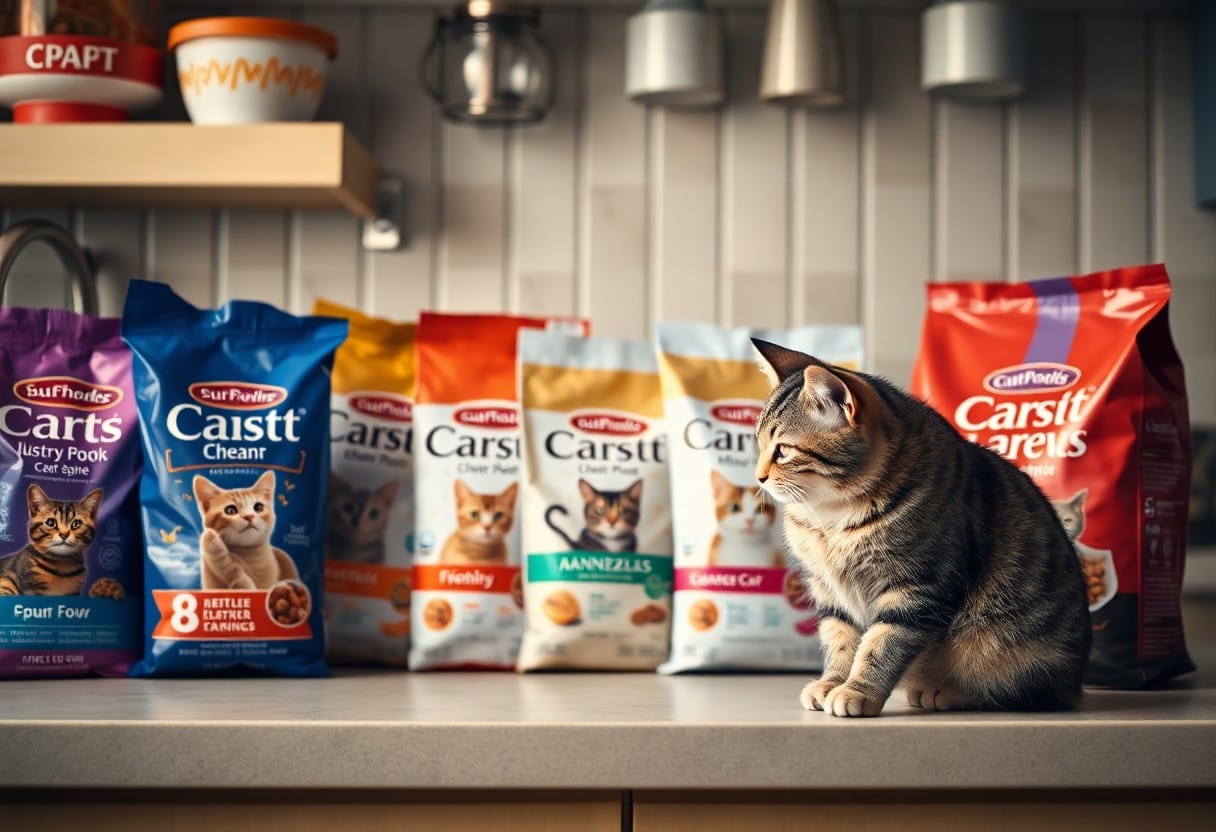
Step-by-Step Guide to Choosing a Brand
After understanding the basic principles of cat nutrition, it’s crucial to follow a systematic approach to select a suitable food brand for your feline companion. Use the following steps as a guide to make an informed choice.
| Step | Description |
|---|---|
| 1 | Research Brand Reputation |
| 2 | Evaluating Ingredient Quality |
| 3 | Checking Certifications |
| 4 | Assessing Price vs. Value |
| 5 | Consulting with Your Veterinarian |
| 6 | Reading Customer Reviews |
| 7 | Trial and Observation |
Researching Brand Reputation
To effectively assess a brand’s reputation, look for customer feedback, professional reviews, and industry awards. Check if the brand has had any recalls or controversies in the past, as this can raise concerns about quality and safety. A brand with a solid reputation often values transparency and customer trust.
Evaluating Ingredient Quality
Choosing the right ingredients is paramount for your cat’s health. Look for brands that list high-quality protein sources, like chicken or fish, as the first ingredient. Avoid brands that use fillers, such as corn or soy, which provide little nutritional value. Focus on the presence of crucial nutrients, vitamins, and minerals to ensure a balanced diet. Pay attention to ingredients known for safety, as some preservatives and by-products can be harmful.
Step-by-step, scrutinizing the ingredient list is vital in your selection process. Aim for a diet rich in whole food proteins, as they support muscle health and energy. Be cautious with unnatural additives or excessive fillers, as these can lead to health issues over time. Positive qualities include natural preservatives and whole ingredients that promote optimal digestion. Prioritizing quality over dubious low-cost options ensures your cat enjoys a healthier, happier life.
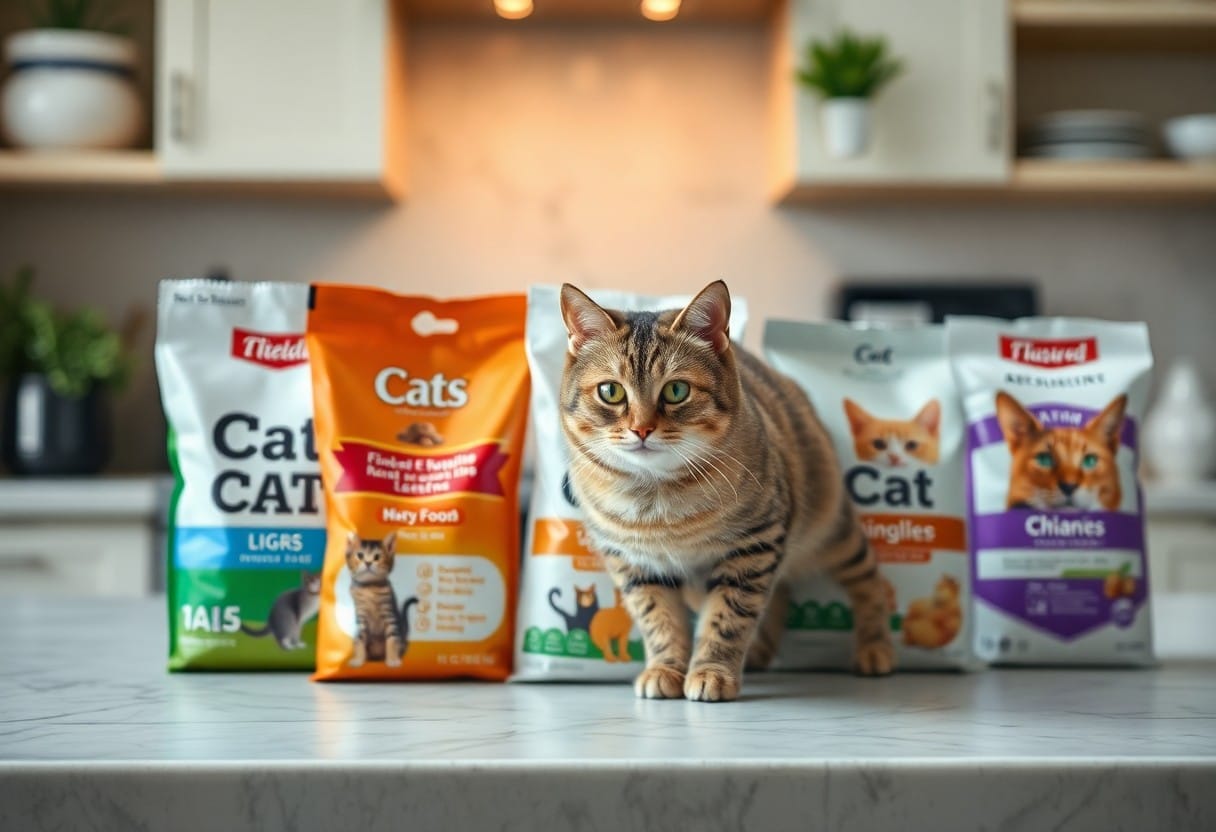
Tips for Making the Right Choice
For selecting the perfect cat food brand, it’s important to consider a few key factors. Start by researching brand reputation, check for nutritional content, and look for quality assurance certifications. Additionally, keep an eye out for recalls and read customer reviews. Consult with fellow cat owners and use comparison charts to navigate your options. Knowing the right elements will greatly enhance your decision-making process.
Reading Labels Effectively
If you want to make informed choices, understanding how to read cat food labels effectively is important. Look for high-quality ingredients at the top of the list and familiarize yourself with terms such as complete and balanced. Pay attention to the guaranteed analysis section that provides information on protein, fat, and fiber content.
Consulting with Veterinarians
To ensure your cat is getting the best nutrition, it is advisable to consult with veterinarians. They can recommend food brands tailored to your cat’s age, activity level, and any specific health conditions. You will gain insights into what ingredients to avoid and any potential allergens.
With their expertise, veterinarians can guide you in selecting pet food that supports your cat’s health. They may highlight the importance of high-quality protein sources and the dangers of fillers, such as corn and soy, which offer little nutritional value. Moreover, some cats may have specific dietary needs, such as requiring grain-free options or special formulas for sensitive stomachs, ensuring your chosen brand aligns with your pet’s individual requirements.
Pros and Cons of Popular Brands
Not all cat food brands are created equal. It’s necessary to understand the advantages and disadvantages of each to ensure you make an informed decision for your feline friend.
ProsCons
| High-quality ingredients | Higher price point |
| Specialized nutrition | Limited availability |
| Better taste for cats | Not suitable for all budgets |
| Reputable manufacturers | Potential for over-marketing |
| Positive customer reviews | Confusing ingredient lists |
| Variety of formulas | May cause allergy reactions |
| Scientific backing | Not returnable if opened |
High-End Brands
If you’re considering high-end cat food brands, you can expect superior quality and carefully sourced ingredients. These brands often provide specialized diets catering to specific health needs, ensuring your cat receives top-notch nutrition. However, they typically come with a steep price tag, which can be a significant investment depending on your budget.
Budget-Friendly Options
With budget-friendly options, you have the chance to feed your cat without breaking the bank. Many brands offer adequate nutrition at a lower price, which can be beneficial for multi-cat households or if you’re managing expenses.
Brands that fall into the budget-friendly category often use less expensive ingredients, which may not always provide the same health benefits as premium options. While these foods can serve everyday needs, you must be cautious of fillers and artificial additives that could potentially harm your cat’s health. Always check ingredient lists to ensure your cat receives the nutrition they deserve without compromising quality for cost. A balance is key to keeping your feline happy and healthy overall.
Common Myths and Misconceptions
Despite the overwhelming variety of cat food options on the market, many owners fall victim to myths and misconceptions surrounding pet nutrition. For instance, some believe that dry food is important for maintaining dental health, while others think that a high-protein diet is always best. Being informed about these myths is key to making the right choices for your cat’s health and well-being.
Grain-Free vs. Grain-Inclusive
An ongoing debate in pet nutrition is whether grain-free diets are superior to grain-inclusive options. While some cats may benefit from a grain-free diet due to allergies or sensitivities, others can thrive on grains such as rice or oats. Ultimately, it’s important to evaluate your cat’s individual needs rather than subscribing to trends.
Organic Options
You may be considering organic cat food, believing it to be a healthier choice for your feline friend. While organic options are made from ingredients free of synthetic pesticides and fertilizers, it’s important to note that not all organic products are nutritionally balanced for your cat.
Organic cat food can offer higher-quality ingredients and may have fewer harmful additives. However, it’s important to check the nutrition labels and ensure that the food meets your cat’s specific dietary needs. An organic label does not automatically guarantee a superior product—look for a complete and balanced formula certified by AAFCO (Association of American Feed Control Officials). If you decide on organic options, ensure they are suitable for your cat’s lifestyle and health requirements, as a premium price does not guarantee better nutrition.
Conclusion
Conclusively, as you navigate the process of selecting the right cat food brand, these 7 critical steps will empower your decision-making. By evaluating ingredients, considering your cat’s specific needs, and understanding the brand’s reputation, you ensure a healthier and happier life for your feline. Prioritizing quality and nutrition will undoubtedly lead to improved well-being for your pet. Take the time to explore and choose wisely, as your cat deserves the best.
FAQ
Q: What factors should I prioritize when selecting a cat food brand?
A: When choosing a cat food brand, consider the nutritional value of the ingredients used. Look for high-quality proteins as the main ingredient, appropriate levels of fats, and minimal fillers. It’s also vital to ensure the food is tailored to your cat’s life stage (kitten, adult, senior) and any specific dietary needs they may have (such as grain-free options). Furthermore, factor in the brand’s reputation for safety and adherence to regulatory standards.
Q: How can I assess the quality of ingredients in cat food?
A: To evaluate ingredient quality, examine the ingredient list provided on the packaging. Ingredients are typically listed in order of quantity, so high-quality proteins should be prominently featured at the beginning. Whole ingredients, such as real meat or fish, are preferable. Additionally, be cautious of vague terms like “meat by-products” and avoid brands with excessive artificial preservatives, colors, or flavors. Researching the brand’s sourcing and manufacturing practices can also provide insight into their ingredient quality.
Q: Is price an indicator of the quality of cat food?
A: While not always definitive, the price of cat food can often correlate with ingredient quality. Higher-priced brands typically invest more in sourcing premium ingredients and maintaining rigorous quality control. However, it’s vital to evaluate the nutritional content and ingredient list instead of solely relying on the price tag. Some affordable brands offer excellent quality products, so thorough research and comparison can help ensure you find a cat food that meets both your budget and your pet’s nutritional needs.
